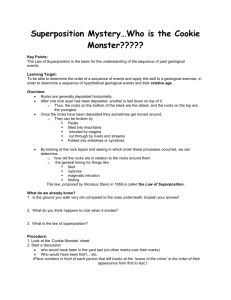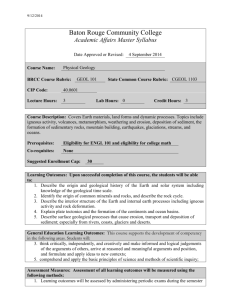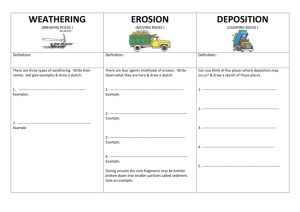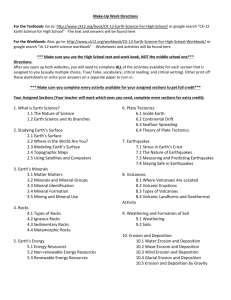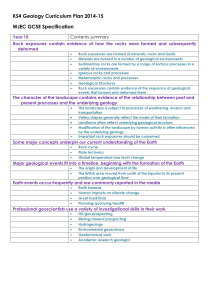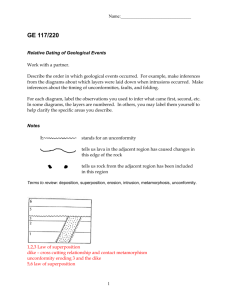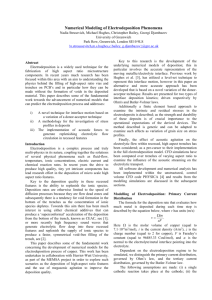Superposition Mystery
advertisement
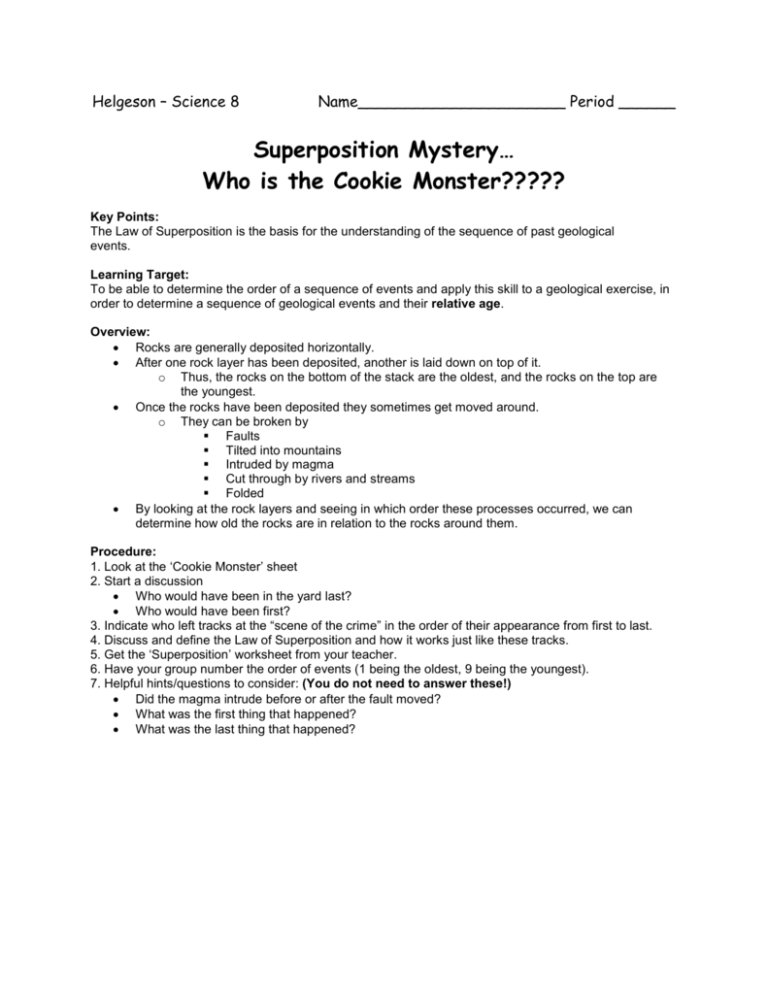
Helgeson – Science 8 Name______________________ Period ______ Superposition Mystery… Who is the Cookie Monster????? Key Points: The Law of Superposition is the basis for the understanding of the sequence of past geological events. Learning Target: To be able to determine the order of a sequence of events and apply this skill to a geological exercise, in order to determine a sequence of geological events and their relative age. Overview: Rocks are generally deposited horizontally. After one rock layer has been deposited, another is laid down on top of it. o Thus, the rocks on the bottom of the stack are the oldest, and the rocks on the top are the youngest. Once the rocks have been deposited they sometimes get moved around. o They can be broken by Faults Tilted into mountains Intruded by magma Cut through by rivers and streams Folded By looking at the rock layers and seeing in which order these processes occurred, we can determine how old the rocks are in relation to the rocks around them. Procedure: 1. Look at the ‘Cookie Monster’ sheet 2. Start a discussion Who would have been in the yard last? Who would have been first? 3. Indicate who left tracks at the “scene of the crime” in the order of their appearance from first to last. 4. Discuss and define the Law of Superposition and how it works just like these tracks. 5. Get the ‘Superposition’ worksheet from your teacher. 6. Have your group number the order of events (1 being the oldest, 9 being the youngest). 7. Helpful hints/questions to consider: (You do not need to answer these!) Did the magma intrude before or after the fault moved? What was the first thing that happened? What was the last thing that happened? Cookie Monster tracks Someone took the last cookie in the cookie jar last night. The last person to leave the scene is the culprit. Who was it?___________________________________ Clues: The Butler walks to work The Handyman rides a bike The Cook rides a motorcycle The Maid drives a car The Nephew has a seeing-eye dog _____ Deposition of Layer E _____ Deposition of Layer B _____ Intrusion of Magma _____ Erosion of Layer B _____ Formation of Fault _____ Deposition of Layer F _____ Deposition of Layer D _____ Erosion of Layer D _____ Deposition of Layer A
